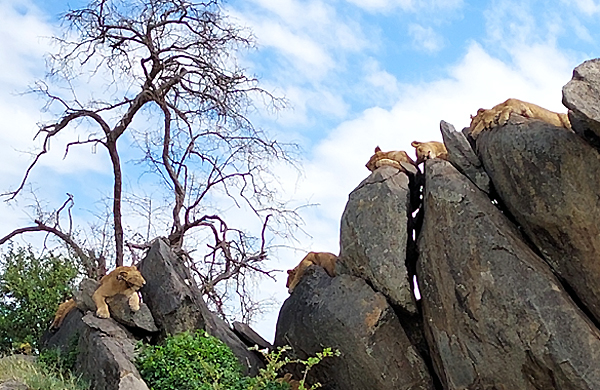 Many still considered him a youngster. Only 6-7 feet long he was little compared to the monsters of Lake Turkana, many photographed at over 25 feet. But he didn’t feel young, anymore.
Many still considered him a youngster. Only 6-7 feet long he was little compared to the monsters of Lake Turkana, many photographed at over 25 feet. But he didn’t feel young, anymore.
Born on a buried sand nest on the edge of the great Mara River, he ate voraciously his first several years, swimming madly away from the large bull frogs the size of soccer balls that gobbled up little crocs by the dozens.
A few years later when he reached a couple feet long he had to eat only a few days each week. He lie motionless just under the water at the shoreline, jumping up twice his length to snatch a bird trying to flee. Soon, irony of ironies, he was hunting the frogs.
When he reached his early teens he was too big to hide any longer among the water lilies in the crags of the great Mara. He began to crawl out onto the rocks to get warmed by the sun like the big guys.
It wasn’t long ago that he started to sleep more and more. When he woke hungry he waited for a small impala coming to drink and that was only a few times every couple months. But back then he ate his hunger rather than the impala if there were any big guys around. He’d seen some buddies persist only to lose the prey to one of the Mara monsters, and sometimes even parts of their snout.
Now at a robust 7-8 feet he found himself with no appetite except twice a year. He slept the rest of the time behind a secluded and log hidden under a big leafed tamarila bush that hung over the river.
His hunger woke him the day we saw him. Perhaps, too, he felt the ripples of the big guys slipping into the river. Whatever it was he was famished.
So no longer junior he couldn’t hang back an instant longer, because the moment he started to swim again after his several month sleep his appetite grew extreme. He hurried out no longer deterred by the current, his sleek powerful body cutting through the turbulent Mara waters as if it were a still lake in the mountains.
Suddenly he was with others his size swimming but without any real direction, nothing to hunt in the deep middle of the river. Then all of a sudden he saw one of his buddies snapping at a head with horns that bobbed among three or four of his peers. The horns weren’t sharp at the end or shiny in the sun. They looked puffy and grey.
The four 7-foot crocs gnawed and slapped their jaws all over the thing but it didn’t soothe their appetites. Soon they backed off and encircled it like the spokes in a wheel.
Finally the 6-month old skeleton sunk back into the water. His appetite soared. He wriggled, challenging his peers, but they quickly swam away. He stayed right there in the middle of the river. He knew something was on the way.
By the end of our 8th day in the Serengeti, our 18th on the overall safari including Kenya we’d seen virtually everything but a rhino. Most travelers lack the inclination for spending so much time and money on an East African Safari today but it reminded me that in the old days I rarely guided a trip that was less than 23-25 days. Marlin Perkins’ first safari with supporters of the Lincoln Park Zoo in 1957 lasted two months and six days!
We intersected the migration big time two days ago in the western corridor. We spent a night at a beautiful camp on a hillside overlooking Seronera and the next morning watched a 5-mile long file of wildebeest race across the valley below. The migration has yet to reach further north, but our schedule had us the last two days in Tanzania’s far north just in case the migration had been early.
On our way up we saw our last group of lions, bringing our total to 46. The family of 13 was draped onto a very small kopjes in the middle of a vast flat prairie like bits of discarded bread dough thrown over a broken spatula. We left the rock of lions just a tad bit south of Lobo and continued moving north. Game became very scarce. The grass grew five feet high.
Our last game drive scoured the veld up to the Mara River and the Kenyan border. This is Tanzania’s Mara District, and the terrain looks almost exactly like Kenya’s Mara: gently rolling hills, verdant and bushy.
But here in Tanzania south of the great Mara it’s higher and drier than just north over the great Mara River in Kenya. There in Kenya the valley is much better watered, less rocky and has better grass.
So our last game drive was pretty scant. The drive was interrupted with a bit of excitement as we tried and failed to pull another tourist rover out of the black cotton soil in which it was stuck. (Not really a good idea to travel in these parts during the rainy season with only one vehicle. Moreover this one had a broken 4×4 system, so it was doubly doomed and got what it deserved.)
We offered the lovely couple from Barcelona a lift back to their camp but they opted to remain with their driver until another vehicle was sent from their camp. We confirmed this happened by radio before we returned to our camp later that day.
The other notable event was sighting about a dozen giant crocs in the Mara River. Generally these 12-18 foot beasts hide themselves for most of the year in a dormant state. But they know the wilde are coming. This is one of the two times in the year they eat: when the wilde come, and when the wilde go back.
So they were out on the sand banks waiting in the sun or slithering anxiously through the river, positioning themselves for the hundreds of thousands of beefsteaks that will arrive probably in the next 2-3 weeks.
We even saw four trying to devour the head of a wildebeest. We didn’t see the kill and it was possibly the skeleton of last year’s migration, pulled from its crag under water.
So it was a very soft ending to a great safari.
As Steve said to me at our last dinner in camp, it’s a bittersweet time. Everyone looks forward to going home, but no one wants to leave.
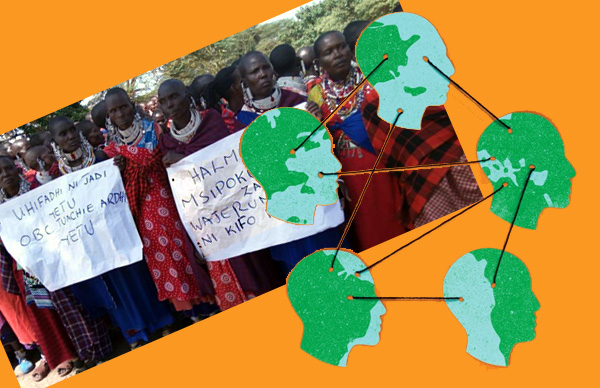 Now few believe in the power of language that I do, and Manvar Singh’s excellent time line of the word “indigenous” developing from the 16th Century into various versions including Maasai anagrams is almost fascinating. But what does it really have to do with the Maasai being kicked out of Loliondo?
Now few believe in the power of language that I do, and Manvar Singh’s excellent time line of the word “indigenous” developing from the 16th Century into various versions including Maasai anagrams is almost fascinating. But what does it really have to do with the Maasai being kicked out of Loliondo? One of the most successful of my over 100 migration safaris in the last half century!
One of the most successful of my over 100 migration safaris in the last half century!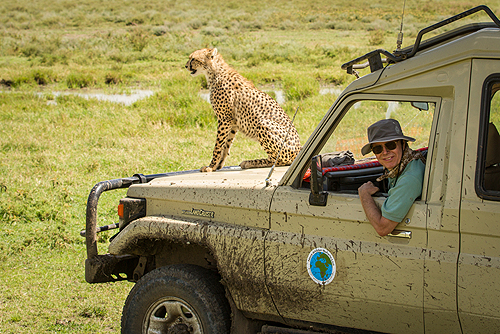 Tired but infuriated I watched the House Havoc to its end. Then just as my brain sensed a wee bit of insight a client sent me the Times’
Tired but infuriated I watched the House Havoc to its end. Then just as my brain sensed a wee bit of insight a client sent me the Times’ 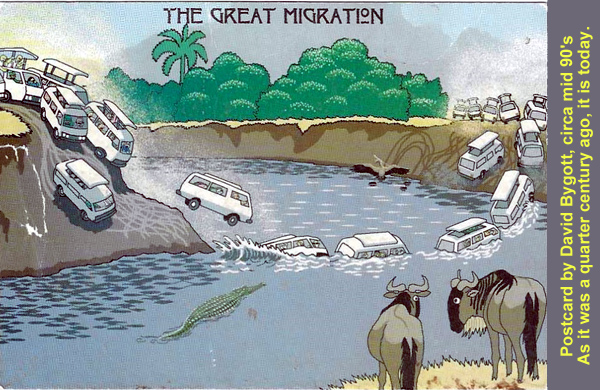 I don’t like crowds… of people, that is. I take my rovers into tens of thousands of wildebeest, sometimes hundreds of thousands. My cars are often the only ones in view.
I don’t like crowds… of people, that is. I take my rovers into tens of thousands of wildebeest, sometimes hundreds of thousands. My cars are often the only ones in view. Out there in the milky skies of a not-so-distant horizon I see the first sparkles of a mammoth explosion rising up from the yet slimy volcanoes just below ground: the travel bubble bursting.
Out there in the milky skies of a not-so-distant horizon I see the first sparkles of a mammoth explosion rising up from the yet slimy volcanoes just below ground: the travel bubble bursting. The “unlawful and
The “unlawful and 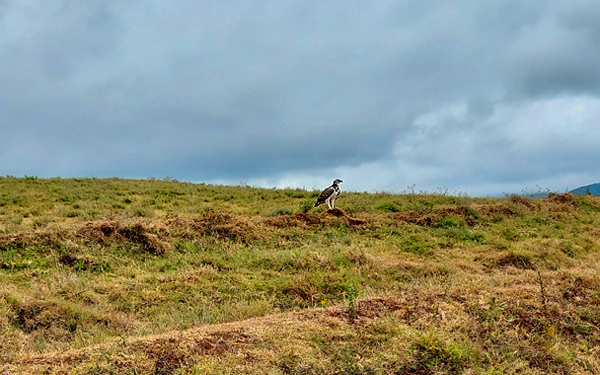 Poignant insights about the wild revealed in my two “post-pandemic” East African safaris, last November and this month, suggest a tiny silver lining in the pandemic:
Poignant insights about the wild revealed in my two “post-pandemic” East African safaris, last November and this month, suggest a tiny silver lining in the pandemic: Many still considered him a youngster. Only 6-7 feet long he was little compared to the monsters of Lake Turkana, many photographed at over 25 feet. But he didn’t feel young, anymore.
Many still considered him a youngster. Only 6-7 feet long he was little compared to the monsters of Lake Turkana, many photographed at over 25 feet. But he didn’t feel young, anymore. So by the end of our 5th day in the Serengeti we topped 30 lion including three kills, 3 cheetah, thousands of elephant and literally tens of thousands of gazelle. Oh, and a python, serval cat and an absolutely wonderful chocolate cake presented to us with song at our last camp!
So by the end of our 5th day in the Serengeti we topped 30 lion including three kills, 3 cheetah, thousands of elephant and literally tens of thousands of gazelle. Oh, and a python, serval cat and an absolutely wonderful chocolate cake presented to us with song at our last camp!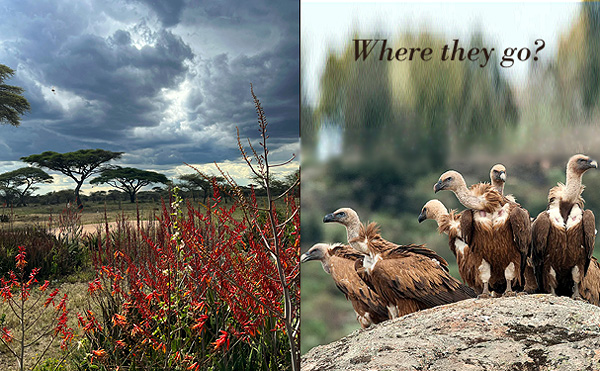 Hundreds of vultures. Mounted on the acacia trees, flying between the patches of thick forest, landing and taking off from the meadows within the woods. So we plowed back and forth through the high grasses trying to discover what they were scavenging. What dinosaur could bring so many birds together?
Hundreds of vultures. Mounted on the acacia trees, flying between the patches of thick forest, landing and taking off from the meadows within the woods. So we plowed back and forth through the high grasses trying to discover what they were scavenging. What dinosaur could bring so many birds together? If like me you have serious hope that Omicron (and fingers crossed, the whole pandemic) might be gone by mid-year then you might want to join me as I continue chasing the herds in Tanzania this June!
If like me you have serious hope that Omicron (and fingers crossed, the whole pandemic) might be gone by mid-year then you might want to join me as I continue chasing the herds in Tanzania this June!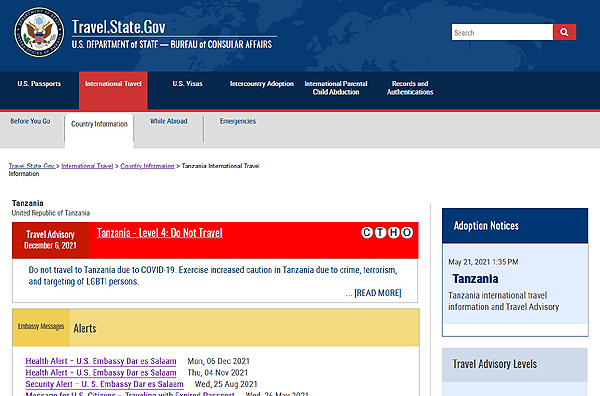 The
The  Seven of us returned from 3-4 weeks in Tanzania on Thanksgiving Day. This is a report of the formalities required with regards to Covid. This is a very small sample of how people travel to and from Tanzania, but every little bit helps.
Seven of us returned from 3-4 weeks in Tanzania on Thanksgiving Day. This is a report of the formalities required with regards to Covid. This is a very small sample of how people travel to and from Tanzania, but every little bit helps. This is not a recommendation that you should not mask. But the personal experience that seven of us just completed in Tanzania has a remarkable affirmation from … the travel insurance industry. That experience does not comport with many of the recommendations about masking.
This is not a recommendation that you should not mask. But the personal experience that seven of us just completed in Tanzania has a remarkable affirmation from … the travel insurance industry. That experience does not comport with many of the recommendations about masking.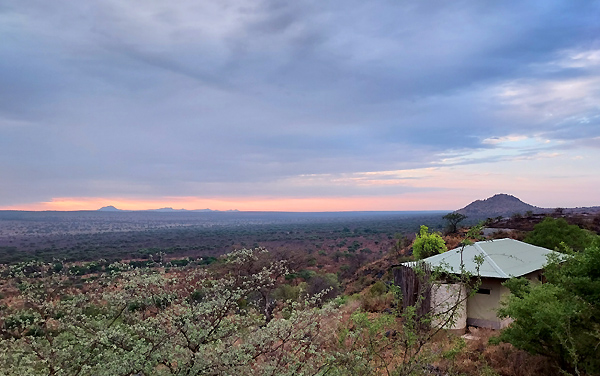 The rains start north to south, and we traveled north to south and always seemed to be just a day or two ahead of the rains. It was so dry and dusty in Tarangire when we got there Monday that the interior of my room was 105F and my hands were dry after washing my face in the sink before I could get to the towel rack.
The rains start north to south, and we traveled north to south and always seemed to be just a day or two ahead of the rains. It was so dry and dusty in Tarangire when we got there Monday that the interior of my room was 105F and my hands were dry after washing my face in the sink before I could get to the towel rack.